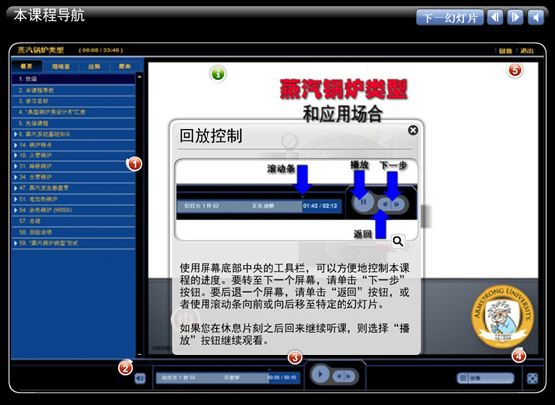Voice over translation is a technique that makes video accessible to multilingual audiences. It involves translating a narrative script and then recording that script over the original audio track.
Here’s how voice over translation compares to other video translation options and how to choose the best translation technique for your video. At the end, you’ll find a checklist for choosing a translation services provider to help you bring your video to a wider audience.
Pros and Cons of Voice Over Translation
Advantages of Multilingual Voice Over
- Voice over translation is cost-effective. You’ve already invested in creating your video’s visual experience. Recording a voice over translation makes that experience available to a wider audience without the time and expense of creating a brand-new video from scratch.
- There’s more to connecting with a multicultural audience than getting the language right. A reputable translation service provider like Interpro will localize and adapt the script to meet cultural expectations. When the script hits the studio, it’s recorded by native speakers. This way the audience won’t be surprised by an accent or dialect they weren’t expecting.
- It’s not just words that convey a message; it’s how the speaker says them. The talented speakers who record voice over translations match the original speaker’s tone, style, and energy to keep listeners engaged.
- Voice overs let viewers concentrate on the action on screen. This is especially important in training videos and product demos, where viewers might miss important action while reading a subtitle.
Disadvantages of Multilingual Voice Over
- It’s an extra step, but a good multilingual voice over needs script adaptation. In every language, there are multiple ways of expressing an idea. A technically correct translation of what a speaker said might not be the best way to convey what they mean. Script adaptation makes sure the target audience gets not only the ideas, but the emotion and context behind what’s being said.
- In the fight between voice over translation and subtitling, voice over translation is more engaging but also more expensive. A compromise might be Video Overlay, a voice over that doesn’t follow a script. Instead, native speakers describe the action on screen as though they were covering a live event. Interpro offers this service and has localization consultants to talk about whether this is an option for you.
- Some viewers find voice over translations distracting because they can still hear the original audio in the background and because the translation doesn’t align with speakers’ lip movements. This complaint is most common in countries where dubbing, instead of voice over translation, is the norm.
- Voice overs aren’t accessible to the hearing impaired. To make your video accessible to everyone in your audience, we recommend closed captioning along with your voice over recording. Captions can be added with the ability for viewers to turn them on and off or can be embedded so they are always on.
The Multilingual Voice Over Process
This is how we translate the audio voices in your video to make your message accessible to a multilingual audience.
- Transcription. The first step in voice over translation is transcribing the speech from the original video. Now we have a script to work from.
- Translation and localization. A native speaker translates the script into the target language. Accuracy is paramount; the translation should go through multiple levels of proofreading and review before the script is approved.
- Translation and localization of onscreen text. If your video includes onscreen text, your translation service provider will need to translate that as well. Depending on the context, you might cover the text with subtitles or you might have it added to the script for the voice over talent to read.
- Voice over recording. The voice over translation is recorded by professional voice actors who are also native speakers of the target language. Make sure your service provider is equipped to provide professional-level studio recordings for optimal sound quality.
*At Interpro, we always use human voice over talent unless a client specifically requests an AI voice. If AI is used, we add a step to the quality assurance process to check for pronunciation, punctuation, and pacing. We also focus on making sure the voice sounds as human as possible. - Audio track replacement. The volume is turned down on the original audio and the translated audio is laid over it.
- Sync audio with video. The audio track is edited and adjusted to sync it as closely as possible with the images on screen.
- Quality assurance. Before your translated video is delivered, it must go through a rigorous quality assurance process. This ensures quality of the translation, the audio recording, and the syncing of audio and video. This is a critical step to make your final voice over translation as seamless as it can be.
Note that not every company providing voice over translation services takes all these steps. Before beginning a project, make sure you know the extent and limits of your translation partner’s capabilities.
Using AI for Multilingual Voice Over Recording
Rapidly-evolving artificial intelligence tools are playing a growing role in the translation space. They’re not ideal for every use case, but there are definitely jobs AI can handle.
The biggest drawback to AI-generated audio is that it’s difficult for audiences to connect to it on an emotional level. When you’re looking to make a genuine connection to a viewer, a human speaker is still the way to go.
Machines have a hard time picking up context like sarcasm, humor, or emotion that could color the meaning of what’s being said. A human voice over translator, on the other hand, will understand that nuance and be able to express it appropriately.
Using AI to translate your message is its own minefield. Languages are filled with idioms and expressions machines simply can’t grasp as quickly as a human can. But the technology learns at an incredible rate, so as humans continue to train AI models, it’s likely translations will start becoming more accurate.
So when can you use AI? At the moment, its best use cases are for simple translations that don’t require an emotional connection – like answering frequently asked questions or explaining an easy step-by-step process.
Examples of Multilingual Voice Over Recording
Here are some examples of a human voiceover compared to an AI voiceover.
Human Voiceover in English
AI Voiceover in English
AI Voiceover in Spanish
Voice Over Translation Vs. Dubbing
There’s sometimes confusion between voice overs and dubbing. In practice, you’re more likely to have seen voice over translation in documentaries or educational programs, and dubbing in movies and other entertainment.
In voice over translation, the original audio can be heard at a low level in the background. If the speaker laughs or sighs, the audience can hear it.
A voice over focuses on conveying the message over faithfully reproducing every sound. Rambling sentences might be reined in to make them more concise, and filler words like “um” and “ah” are usually omitted.
Dubbing, on the other hand, completely replaces the original audio track. If you ever sat up late as a kid to watch kung fu movies, you’ve seen dubbing.
Dubbed audio is synced as closely as possible with the speaker’s lip movements. The voice over actor reproduces every sound the original actor made – including filler words, sneezes, and yawns.
Other Types of Voice Over Translation
Instructional Style
Instructional voice over translations replace the original audio entirely. It’s often used in courses and eLearning materials, describing on-screen action so it can be understood by viewers in the target culture. The translation is focused on conveying the meaning of the narrative rather than the exact words of the original speaker.
Dialogue Replacement
When your video has multiple speakers, it can be helpful to employ a different voice over translator for each person. This is different from dubbing because it doesn’t require syncing the translated audio with on-screen mouth movements or reproducing noises irrelevant to the message. It’s a popular choice for corporate videos.
Choosing the Right Voice Over Translation Provider
If voice over translation seems like a good fit for your project, make sure the service provider you choose checks all these boxes:
- Documented quality assurance process at both the script translation stage and at the voice over recording stage
- Translation and voice over provided by native speakers who understand the cultural context of the content and the audience
- Professional quality audio recorded in a studio, mixed with background audio, and incorporating music or other nonspeech audio elements of the original video
- Ability to work with the file type of your source video and to provide your translated video in the right file type for your needs
- Experienced provider able to troubleshoot unexpected issues as they crop up
Schedule Your Free Video Translation Consultation
Translating the audio expands the reach of your video content across the globe. To make sure your message resonates with every audience, choose a reliable translation services partner with extensive experience, technical capabilities, and strict quality guidelines.
Interpro takes a personalized approach to video localization, creating unique solutions for each customer. We offer the translation and localization services, recording capabilities, and full-service technical support to complete your project exactly the way you want it.
Schedule a free Video Translation Consultation today to talk about your project with an Interpro localization specialist and start on your way to reaching a global audience
Blogs From Interpro

What is Multilingual Desktop Publishing (DTP)?

eLearning Translation – Best Practices

Subtitle Translation: Make Your Video Content Relevant

4 Ways to Plan Ahead for Video Translation


